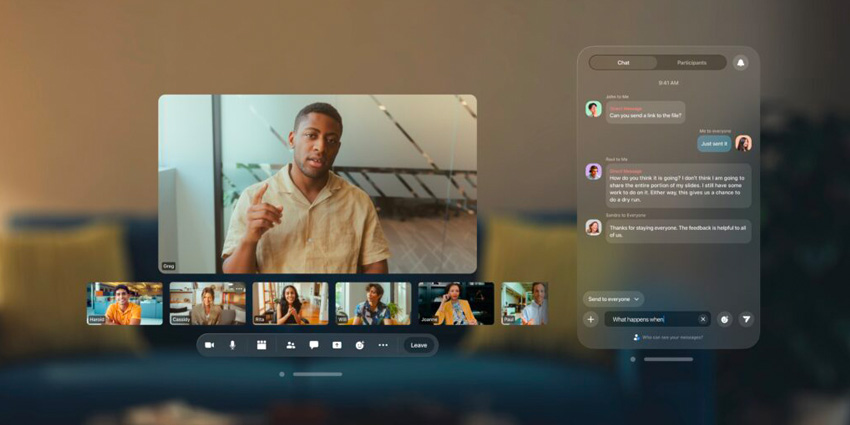XR leverages high-quality 3D visualisations to fuel all immersive applications and services. The technology is commonly used in enterprises to improve understanding and decrease knowledge gaps. In construction and repair, AR glasses can provide workers with instructional visualisations which provide hands-free instructions.
Other use cases exist in healthcare, and the potential for training and telehealth solutions is ripe, with many vendors trying to break into the space. However, an area healthcare vendors give lesser focus to but hold immense importance is democratising access to patient education.
Dr Linda Ciavarelli, Co-Founder of HouseCall VR, spoke with XR Today to discuss how emerging XR technologies could fill patient knowledge gaps.
Dr Ciavarelli explained that patient education is a space that is not “well developed in the healthcare vertical and extended reality,” sector leading to a gap for healthcare solutions providers to leverage immersive communications to democratise access to healthcare information.
On the other hand, areas such as healthcare simulation, training, and direct therapeutic receive a lot more attention and R&D, with only a handful of firms, such as Housecall VR, helping patients to understand their diagnosis using XR solutions and visualisations.
Will XR Democratise Patient Education?
Digital healthcare solutions, starting from smartphone applications to, potentially, XR headsets, democratise healthcare and increase accessibility to patient care. Moreover, on the professional side, digital solutions are expanding the range of healthcare knowledge and training worldwide, driving the idea of a borderless operating room.
Solutions like those offered by Housecall VR aim to improve the democratisation of healthcare information and leverage XR visualisations to help patients understand diagnosis.
Dr Ciavarelli noted:
“[For Housecall VR] creating something that allows people to fundamentally understand what it is that’s going on with their health, which you can define as health literacy, which is the ability to understand, interpret, and act on healthcare information that you’re given and when people don’t have that ability when they don’t have that literacy, we know that they have worse outcomes, they have more prone to chronic disease, and you know a host of other factors that not only are impactful for the patient but also impactful for the economy of media.”
Moreover, Dr Ciavarelli explained that there’s space for expansion within the patient education sector and deploying an immersive solution within that market, only “it’s deployed properly.”
Immersive patient education technology solutions provide an avenue to “give patients agency,” Dr Ciavarelli remarked.
“We know that the way to give people power is through knowledge,” Dr Ciavarelli noted. She also stated that when patients gain an improved knowledge of health conditions, “we’re ultimately giving them agency and allowing them to control their destinies. Giving people the ability to fundamentally understand and advocate for themselves.”
Emerging XR applications may be a key to democratising patient education. However, there are many hurdles still present. Medical institutions are filled with various hardware, and integrating XR could prove difficult without proper standardisation and interoperability.
Dr Ciavarelli explained:
Standardisation is one of the opportunities that we’re all looking for, and we’ve tried in electronic health records to standardise these things, healthcare and particularly in the United States, but globally is really fractionated, it’s siloed, it’s difficult to share information. As we move forward with immersive technology or all technology, it’s I think one of the grand goals is to have standardised not just processes, not just specifically what Housecall VR is working on, but across the sector.
Can the Medical Metaverse Improve Patient Outcomes?
As the Metaverse get rebranded as the “Industrial Metaverse” to restore lost faith among business investors, some are also driving forward a “Medical Metaverse.”
In late August, the World Economic Forum (WEF) released its 11th annual Top 10 Emerging Technologies report, which named the “Medical Metaverse” among its top emerging technologies of 2023 – alongside flexible batteries, genAI, sustainable aviation fuel, designer phages, wearable plant sensors, spatial optics, flexible neural electronics, sustainable computing, and AI-facilitated healthcare.
The WEF listed a range of patient and professional-facing healthcare use cases whereby XR can improve healthcare outcomes across various environments.
One of the healthcare sectors that XR can assist with is mental health and wellness facilities. The WEF notes how mental health groups leverage gaming platforms to improve patient outcomes via interactable and immersive experiences, with firms like DeepWell, Ninja Theory, and TRIPP aiming to reduce mental health concerns like anxiety and depression with wellness-focused XR experiences.
Moreover, many wellness applications contain shared immersive experiences, which the WEF calls the Medical Metaverse, whereby patients can soon connect to therapeutic neurotechnologies, such as direct brain stimulation, to improve mental health outcomes.
The WEF report notes that tangible healthcare-based use cases benefit patients and Metaverse service providers by highlighting a “practical, necessary application.”
For healthcare use cases, the Medical Metaverse is growing. The WEF notes how the growing mental health crisis makes conditions “ripe” for Metaverse-based healthcare solutions.
With the increase in mental health-related queries, medical facilities cannot meet the increased demand, says the WEF.
The United States government also offers a federal reimbursement opportunity for tele-mental health services – including medical Metaverse services – to help meet the growing patient demand.
Additionally, the WEF explains that emerging healthcare technologies can support related use cases for patient outcomes such as prevention, diagnostics, therapy, education, and research.
Moreover, The WEF reported while excess screen time can lead to poor well-being, the same technology can improve the current mental health crisis if used correctly.
WEF explained that “screen time spent building connections in shared virtual spaces might help combat the growing mental health crisis as opposed to contributing to it.”
The WEF noted how virtual shared Metaverse spaces can help reduce the psychological strain of digital interactions for professionals and consumers.
XR to Improve Training Outcome and Surgeon Readyness
Pearly Chen, the Head of Business Development and Content Partnerships at VIVEPORT, HTC VIVE, also spoke with the WEF to discuss the emerging presence of XR and the Metaverse in healthcare.
The HTC VIVE representative also reinforced how immersive solutions could ease patients into stressful surgeries or operations. “This really makes the patient experience not so scary anymore,” Chen remarked.
XR can assist in mental and physical therapy procedures. Chen notes that doctors can digitally deliver reliable services – commonplace in clinicians’ offices – to a patient’s home, dramatically improving healthcare services’ access and efficiency.
Moreover, according to Chen, doctors already use XR in healthcare institutions to help with high-stakes decision-making, including internal 3D visualisation and eventual patient communication. This allows doctors to explore RT3D visualisation of medical images. Therefore, doctors can improve communication between co-workers and patients with XR solutions.
Chen remarked:
This is one of my favourite examples of real-life value-add today. It’s not just about gaming entertainment; it’s something that can be done exponentially better using this immersive interface in artificial intelligence tools.
Chen also noted that currently, several healthcare professionals still use 2D resources to assist with decision-making, adding:
Through a tool like the surgical theatre that uses AI to take in all these different 2D medical images that is available today and build them into a three-dimensional anatomy that is patient-specific – the doctor can now go into the patient’s brain or hearts together with the patient and understand together and also have a better plan of surgery that increases the success of such an operation.







